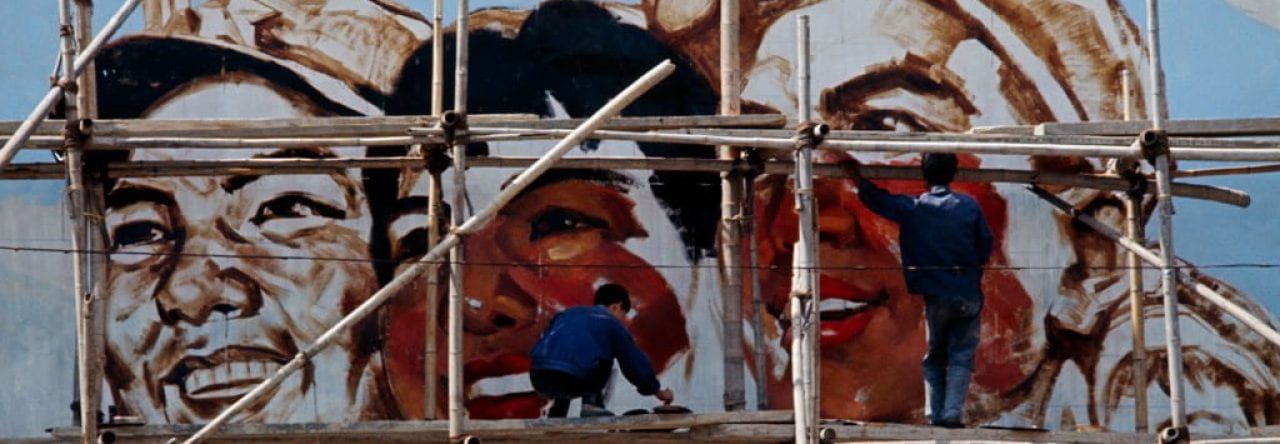
Xu Beihong. Wounded Lion. ink and color on paper. 1938. Beihong China Arts (https://beihongchinaarts.com/figure8/8-wounded-lion-2/)
In 1938, Xu Beihong created “Wounded Lion” as a tribute to the heroic spirit and patriotism of the Chinese people during the Anti-Japanese War. The painting portrays a wounded lion standing on a hillside with one of its front legs injured. The lion’s majesty and strength were weakened by the injury, but it still appeared to be strong and unyielding. Xu Beihong uses a large lion to represent China during wartime, standing tall with a bruised body, symbolizing the Chinese people in the war. Although they were hurt, they did not yield and remained strong and unyielding.
Xu Beihong applied shadows and bold brushstrokes in the delineation of the lion, contributing to the powerful momentum that burst from the lion in desperation. There is also an integration of firm and bold brushstrokes with the precise delineation of form, reflecting a mixture of Western realistic techniques in a traditional Guohua style. In other words, Xu Beihong retains the traditional characteristics of Guohua in terms of color and composition while adopting techniques from Western oil paintings. Much of this stems from Xu Beihong’s early European experience of studying Western art (Rule 2020: 103). The messages of Xu Beihong’s paintings during the Anti-Japanese War are about virtue, courage, and righteousness, reflecting the predicament of China at the time (Wong 2004: 33). As the Japanese incursion progresses in 1937, “Wounded Lion” echoes with the movement of anti-Japanese propaganda in society (Andrews and Shen 2012: 117).
Overall, “Wounded Lion” showcases Xu Beihong’s remarkable painting skills and deep understanding of the natural world. Through this painting, Xu Beihong expresses the inner tenacity and unyielding spirit of Chinese people during wartime by presenting the perseverance and vitality of animals in nature.
Bibliography
Andrews, Julia F. and Kuiyi Shen. The Art of Modern China. Berkeley, Los Angeles and London: University of California Press, 2012
Rule, Ted. 2020. “Pan Yuliang Xu Beihong and the Revolution in Chinese Art.” Quadrant, Apr 01, 100-105.
Wong, Ka F. “Reimaging China: history painting of Xu Beihong in early twentieth century.” PhD diss., 2004.


Leave a Reply
You must be logged in to post a comment.